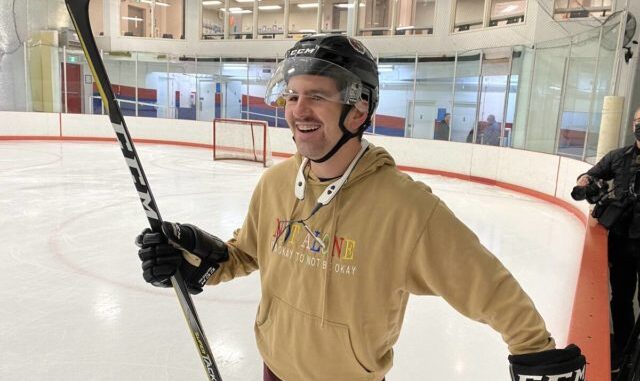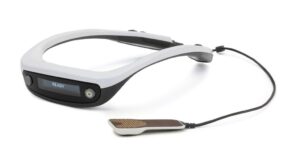
A new device which stimulates the tongue, and reopens neural pathways, is helping former Humboldt Bronco, Layne Matechuk, get back to his hockey dreams. The technology is just the latest step in what has been a very long road to recovery.
When he was taken to hospital, that fateful night in April 2018, his face was so severely damaged that his parents had to use a tattoo on his arm to identify him. For over a month, Kevin and Shelley hovered lovingly at their son’s bedside as he lay in a coma. They held his hand and often looked at the tattoo on his arm. It reads P-M-A, which stands for positive mental attitude.
And it’s that positive mental attittude which has led Layne Matechuk and his parents to where they are today.
Layne suffered major brain injuries following the crash that killed 16 of his teammates and sent the nation into mourning. It was uncertain if he would ever walk or talk again. His dreams of playing professional hockey were shattered.
But with support from his family, a positive mental attitude, and a new technology, Layne has made a remarkable recovery. Through a lengthy rehabiliation process, he slowly learned to walk and talk again. And he underwent numerous surgeries to partially heal his injuries. He now has eleven plates in his face, walks with a limp, and has limited use of his right arm. Despite the success of his rehabilitation efforts, Layne is not satisfied. He still dreams of putting the puck in the net.
“Layne’s goal is to be able to play rec hockey or some kind of hockey someday,” said his dad, Kevin Matechuk.

The device known as a portable neuromodulation stimulator, or PoNS is helping Layne get one step closer to that goal. It is a stimulating plate placed on the tongue which then sends signals through neural networks to the brain. Dr. Ryan D’Arcy is a neuroscientist with HealthTech Connex. He says “Your tongue has nerves that go to the centre of your brain and that allows us actually to activate all sorts of neuro circuits, combine that with rehabilitation and recover lost abilities.”
Dr. Darcy says the technology is a proven method which has helped victims of strokes, and people suffering from Parkinsons, to regain functionality. The Matechuks are hoping this technology can help Layne get back to the love of his life – playing hockey.
Layne and his family recently travelled to Surrey, BC, from the their hometown of Colonsay, Sask, to work with doctors and therapists at the Surrey Neuroplasticity Clinic.
The results have been encouraging. Layne laced up his skates and hit the ice Thursday while wearing the device, moving deliberately and carfeully. He and his trainers noted the improvements as his strides became more confident. “I feel like I’m getting back to how I used to be playing hockey,“ he said with a smile on his face.
^^ More video of @LayneMatechuk skating at Excellent Ice in Surrey. @larkgroup1 #SurreyBC #HumboldtStrong
STORY: https://t.co/yZzYmaEP6Y pic.twitter.com/GcyFHTFqjh— Tom Zillich (@TomZillich) November 18, 2021
His parents, Kevin and Shelley, are also hopeful about the developments. The family will be returning to Saskatchewan soon, but Layne will continue to wear the device as he embarks on a 12-week program, involving regular check-ins with his doctors. Eventually, Layne and his parents will return to BC for one final in-person session. Kevin and Shelley are thrilled with the progress.
“Every parent wishes the best for their child,” Layne’s father, Kevin said. “And with Layne’s injury, to be able to see him continue to progress when at some points we were told he wasn’t going to be able to do things in his life and now we’re seeing him out doing it, it’s really heartwarming for us.”

Be the first to comment